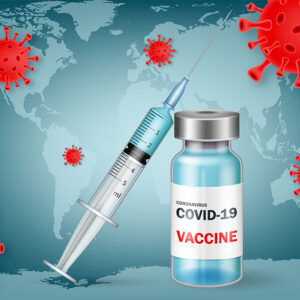As we approach the two-year mark of COVID-19, the need for American leadership in the global response continues to be immense. We must intensify efforts to bring the virus under control both here and abroad. Our international partners need us to serve as the lead actor in defeating the pandemic.
Ensuring success will require a number of actions.
First, the U.S. must accelerate the availability of vaccines, therapies, and diagnostics to low- and middle-income countries. Only when high levels of immunization are achieved everywhere will Americans and our global partners be freed from the devastating impacts of the COVID-19 virus. If the virus spreads unchecked in regions of the world that lack access to vaccines, we will all be put at risk from new variants that could thwart the protection provided by current vaccines.
Under the leadership of American pharmaceutical and bioscience companies, 7.5 billion doses of COVID-19 vaccines were produced by the end of September. An estimated 24 billion doses will be manufactured by June 2022. This unprecedented production has been achieved through more than 300 voluntary manufacturing and production agreements, including technology and knowledge transfers. Delivering these doses to those who lack access is the most critical task that requires our attention.
The U.S. must also pressure other countries to support increased dose-sharing, optimization of production, country readiness, innovation, and the elimination of trade barriers. We must address the severe capability gaps that exist in partner country health systems, which share the responsibility for detecting and tracing the virus, and for providing treatment. Even before the pandemic, the world faced a shortage of 18 million health workers, mostly in low- and middle-income countries. Africa has 2.3 healthcare workers per 1000 population, as compared with the 24.8 in the Americas.
Nearly 45 percent of the globe is now fully vaccinated. But achieving the WHO’s goal of vaccinating 70% of the world population by mid-2022 will prove impossible unless significant new investments are made in countries where current rates of immunization are stuck in the single digits.
Stepping up our health diplomacy will help accomplish that.
America has done more than any other nation to develop and deliver COVID treatments and provide health, economic and humanitarian assistance across the world. Yet in the first phase of the COVID response, China and Russia won the vaccine diplomacy competition through aggressive communications campaigns and coercive vaccine procurement deals. We have seen how impactful global health programs such as the President’s Emergency Plans for AIDS Relief (PEPFAR) can be in positively shaping public opinions of the United States in developing countries. There must be a clear public diplomacy strategy that accompanies our global COVID response efforts.
The most important component of U.S. pandemic leadership is innovation. Squeezing the timetable for developing effective COVID vaccines to less than a year was a herculean feat. But the success of Operation Warp Speed was just a preview of what’s possible when government and industry come together to invest resources and deploy health solutions at lightning pace.
At the recent G7 Leaders meeting, a 100-day pandemic preparedness plan was presented by a coalition of scientists, philanthropists and policymakers to ensure that a pandemic of the scale of Covid-19 never happens again. This plan calls for up-front investments and policy changes to enable the full spectrum of pandemic preparedness and response capabilities needed to stop the next pandemic threat in its tracks in the first 100 days.
The effects of the next pandemic can be minimized only when high levels of preparedness are achieved and planned for, along with the logistics to deliver these tools internationally. If America leads in this arena — and dedicates the needed resources for a strategy of healthcare diplomacy — it will go a long way in making the world a safer place for all mankind.

